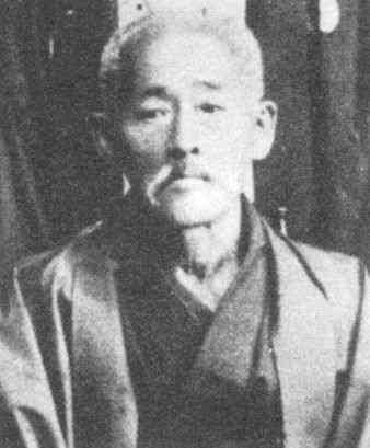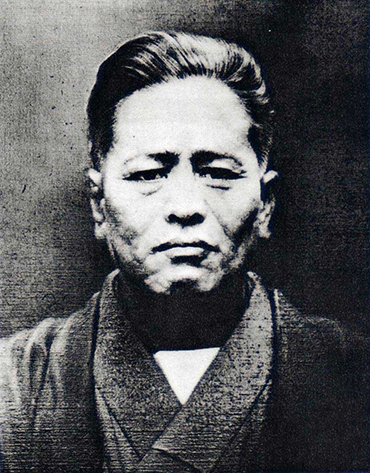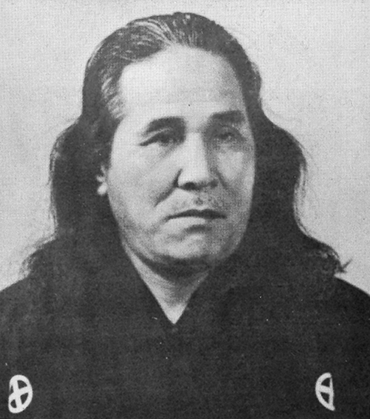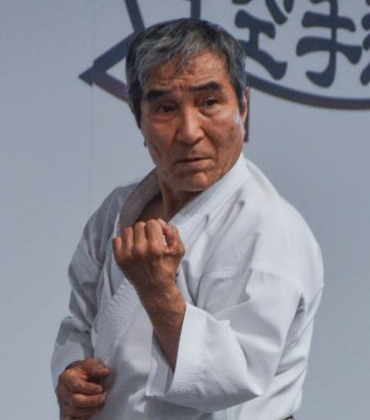Victorian Country Division
History of the Albury / Wodonga dojo.

Lineage

Higaonna Kanryo
March 10, 1853 to October 1915
Higaonna was born to a merchant family in Nishimura, Naha. In 1867, at 14 years of age, he began his martial arts journey studying Luohan Quan, Monk Fist Boxing, under Aragaki Tsuji Pechin Seisho the interpreter for the Ryukyuan court. In September of 1870, he travelled to Fuzhou on the pretext of going to Beijing as a translator, but instead trained for around four years at the Kojo dojo in Fuzhou probably under Kojo Taitei, Wai Xinxian and Iwah. He then went on to train under a man known as Ryu Ryu Ko, but not before spending years doing household chores for him. It wasn't until he saved the mans daughter from drowning during a heavy flood that he begged the master to teach him Kung Fu.
In the 1880's he returned to Okinawa to continue the family business, but also began teaching martial arts in and around Naha. His style was distinguished by the hard and soft techniques in a single system and became so prominent that his style became identified by the Naha-te name. He returned to China several times thereafter to further his studies as well as translator. He began teaching his style, Naha-te, to the public in 1905.
Kanryo performed the well known Sanchin kata powerfully and his students spoke of how the wooden floor would be hot from the gripping of his feet.
Chojun Miyagi
April 25, 1888 to October 8, 1953
Miyagi was born to a wealthy shop owner in Higashimachi, Naha. At the age of eleven he started learning martial arts under Ryuko Aragaki. At the age of fourteen he was introduced to Higaonna Kanryo and under his tutelage spent an arduous period of training interrupted only by his two year military service between 1910 and 1912. In 1915, he made two trips into China, the first into Fujian province to visit the grave of Kanryo's teacher, Ryu Ryu Ko. The second trip he returned to Fujian province, but this time to Foochow to study some local Chinese martial arts. It was during this trip that he observed the Rokkishu, a set of hand exercises that emphasize the rotation of the forearms and wrists to execute offensive and defensive techniques. It was a blending of these techniques with his native Naha-te that would create his style.
After spending several months in China, Miyagi returned to Naha where he opened a dojo. He taught for many years, gaining an enormous reputation as a karateka, but his greatest achievements lie in the popularisation and organisation of karate teaching methods. He introduced karate into Okinawan police work, high schools and other fields of society. In 1929 there was a meeting in Kyoto for the All Japan Martial Arts Demonstration, being unable to attend he sent his top student Jin'an Shinsato in his place. When he was asked what the name of his style was called he improvised the name hanko-ryu, or half hard style, as Miyagi had yet to name his style. On his return to Okinawa, Miyagi decided upon the name Goju-ryu, or hard soft style, taken from a line in the poem Hakku Kenpo: the way of inhaling and exhaling is both hard and soft.
Miyagi revised and further developed the Sanchin kata, the hard aspect of Goju, to make the Tensho kata, the soft aspect of Goju.


Gogen Yamaguchi
January 20, 1909 to May 20, 1989
Gogen Yamaguchi was born to a merchant in Miyakonojo Shonai, Miyazaki near Kagoshima City on the island of Kyushu. In his 5th year of primary school he started learning karate-do under the guidance of Takeo Maruta, a carpenter joiner and Goju-ryu practitioner from Okinawa. He spent years training under Takeo Maruta and began studying in earnest after moving to Kyoto. When attending university he started the Ritsumeikan University Karate Research Association, the first karate club at Risumeikan University. It was during this time that he met Chojun Miyagi and studied under him and would later influential in the spreading of Goju-ryu across mainland Japan. In the early 1930's, Gogen designed what has become the sign of every Goju-ryu practitioner, the Goju-ryu fist which is said to be modeled after Miyagi's right fist.
Gogen was influential in karate for many of todays federations, forms and kumite changes. The sports and tournament fighting kumite or Jiyu-kumite rules were designed and introduced by him in 1934. In 1935 he officially formed the All Japan Karate-do Goju-kai Association and then expanded into the International Karate-do Goju-kai Association in 1955. In 1964, Gogen along with Otsuka Hironori (Wado-ryu), Nakayama Masatoshi (Shotokan), Mabuin Kenei and Iwata Manzao (Shito-ryu) unified many karate schools in Japan into a single union, the All Japan Karate-do Federation which still exists today as the Japan Karate Federation (JKF).
Prior to his death, Yamaguchi was decorated by the Emperor of Japan in 1968 with the Ranju-Hosho, the Blue Ribbon Medal of the fifth order of merit, for his enormous contribution to the spread world wide of the Japanese martial arts and was for many years listed in the Guinness Book of Records regarding his rank and achievements.
Gogen Yamaguchi was known as 'The Cat' for his small stature, but gave an impression of great stature and an aura of power.
Goshi Yamaguchi
September 28, 1942 to current
Goshi Yamaguchi was born in Shinjing, Manchuria on September 28, 1942 as the third son of Gogen Yamaguchi. In 1951 he began practicing Karate-Do at Senzoku Dojo in Asakusa and by 1962 he had attained his Sandan and became an instructor. He entered Nihon University in 1963, majoring in cinema studies in the Department of Arts but also furthered his karate having opportunity to teach karate-do in San Francisco for a year with his brother Kishio Gosen.
After graduating from University in 1969, he became a full time Shihan in the Honbu dojo with a view to promote and develop Goju-ryu Karate-do. Goshi Yamaguchi Hanshi has visited and taught in more than 60 countries throughout the world as the World President and Chief Instructor of Goju Kai and the IKGA, as well as the All Japan Karate-do Federation, the Tokyo Karate Federation, and as an international WKF referee.
In 1990 he was appointed as President of All Japan Karate-Do Gojukai Association, International Karate-Do Gojukai Association, and designated as Saiko Shihan for the two associations. Goshi Yamaguchi, now age 83 years, still displays his tenacity and skill for karate which marks him as a Master of unique abilities both mentally and physically.
